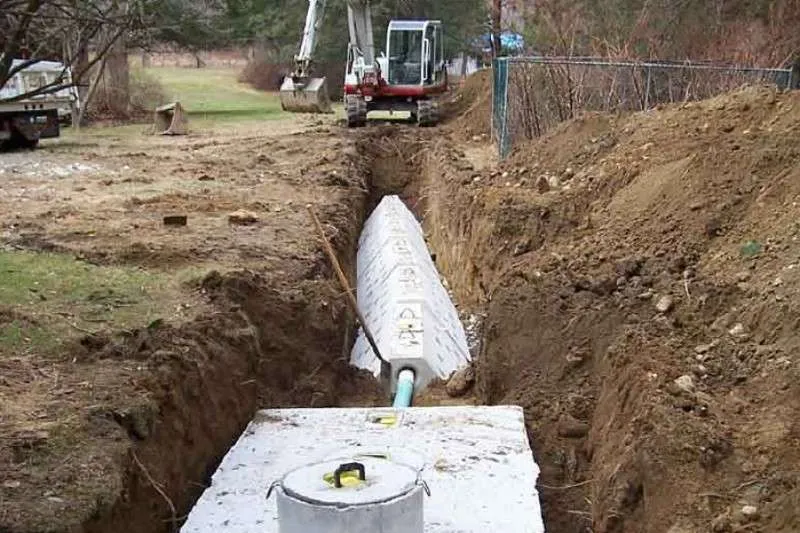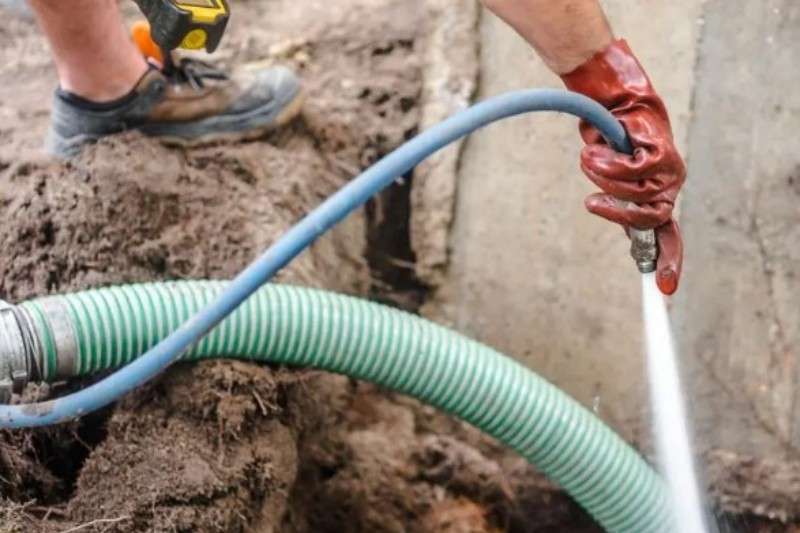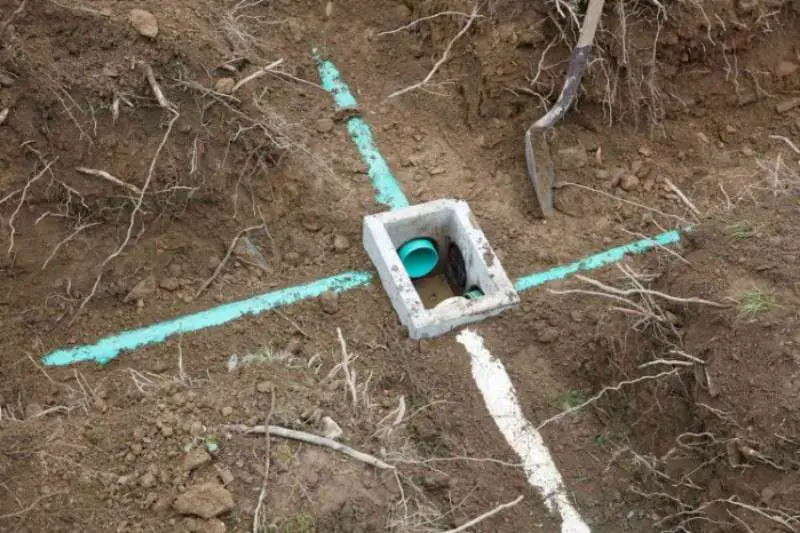Do you need to know how to check and maintain your septic tank? Have you wondered what is involved in a DIY septic tank pump and system inspection? Many homeowners may feel overwhelmed by inspecting and maintaining their septic tank, but it can be done affordably, efficiently, and safely.
In this blog post, we’ll cover everything you need to know about DIY septic tank inspections, including troubleshooting tips, the proper materials needed for regular maintenance, and some common mistakes that prevent some from completing a successful inspection.
Whether you’re considering tackling this project yourself or just curious about the process – read on for all the information you need regarding DIY septic tank inspection and contractor maintenance.
The importance of regular septic system inspections and maintenance
Regular septic system inspections are essential to keep your system functioning properly. Without regular inspections, you could be dealing with major problems down the line that could cost you time and money. During an inspection, your technician will assess your septic system installation’s overall condition and check for any signs of damage, deterioration, or corrosion.
They can check for clogs or blockages in the pipes, inspect the baffles and risers for wear and tear, and inspect the tank lid and cover. Regular maintenance is also important to ensure your septic system remains in good working condition. This includes pumping out any excess sludge, drinking water, or grease from your tank and ensuring all components are cleaned and functioning properly.
The benefits and drawbacks of DIY septic tank care
Doing your septic tank inspection and maintenance can be beneficial. It saves you money on professional services and gives you peace of mind knowing that your septic system is inspected and functioning properly. However, DIY septic tank care comes with some downsides. Properly inspecting a septic tank and any additional components takes time and effort. Additionally, it’s easy to overlook possible problems or make mistakes when independently performing inspections and maintenance tasks.
Safety precautions for DIY septic tank inspection and maintenance

When it comes to DIY septic tank inspection and maintenance, safety should always be a top priority. Working with septic systems can involve hazardous materials, such as sewage and chemicals, so proper safety measures must be taken to avoid danger or injury. This includes understanding the potential hazards of working with septic systems, using personal protective equipment, and taking other safety measures for DIY septic tank care.
Before beginning any inspection or maintenance of your septic system, it is important to be aware of the potential hazards that may be present. Some common risks include exposure to hazardous materials such as household chemicals such as sewage and chemicals, electrical shock from wiring, the possibility of being injured by sharp objects or tools, and garbage disposal.
To reduce the risk of exposure to hazardous materials and other safety hazards, it is important to use personal protective equipment (PPE). This includes wearing protective clothing and gloves, face masks or respirators, eye protection, and steel-toed boots. Make sure that all PPE is properly fitted for maximum protection.
In addition to using personal protective equipment, other safety measures should be taken when performing DIY septic tank inspection and maintenance. Ensure the area is well-ventilated to reduce exposure to hazardous gases or fumes. Always read and follow the manufacturer’s instructions carefully when working with power tools or operating heavy machinery. Lastly, never attempt to access or repair any part of the septic system. You are not qualified to do septic system installation or septic system inspection.
Inspecting your septic tank and system components
DIY septic tank inspections and maintenance are a crucial part of preserving the life of your septic system. Regular inspections can help identify potential problems before they become major, allowing you to take action quickly and avoid costly repairs.
The first step in performing a DIY septic tank inspection is to inspect all of the components of your septic system, including the tank itself and any associated pipes or leach fields. Look for signs of wear, damage, or malfunction. When inspecting the tank, look for any cracks in the walls and debris accumulation on the ground surface or the bottom of the tank that could prevent effluent from exiting properly. If you have access to the tank, use a flashlight or mirror to check for any biological growth or solids that may be accumulating in the tank.
The next step is to measure the sludge level and scum levels in your septic tank. Sludge is composed of heavier materials such as sand, silt, clay, and organic matter that settle to the bottom of your tank, while scum is composed of lighter materials such as fats, oils, and greases that float on the surface. You must use a septic tank ruler or measuring stick to measure these levels accurately. This tool should be inserted into your septic tank pumping well to measure various depths. If the levels of sludge and scum are too high, it is a sign that your tank needs to be pumped.
Finally, you should check for signs of water or sewage effluent leaking from the septic system components. This could indicate a damaged pipe or tank, which can contaminate the surrounding soil pollution if not addressed promptly.
By following these steps, you can perform a DIY septic tank inspection and maintenance that will help keep your septic system in working order. If you cannot complete the work yourself, consult a licensed professional with experience with septic systems to ensure it is done correctly septic system is inspected.
Maintaining your septic tank and drain field
DIY septic tank inspection and maintenance is important for any homeowner with a septic system. Regular septic system maintenance helps keep it in good working order, preventing costly repairs or replacements. While some tasks should be left to professionals, DIY owners can perform most regular septic inspections and maintenance tasks, such as checking the septic tank and drain field, pumping them at appropriate intervals, and ensuring proper drainage and vegetation management around the septic tank and drain field.
Inspecting your septic system should be done every three to five years. It’s important to look for any signs of damage or deterioration to the septic inspector, such as cracks in the tank, broken pipe fittings, or exposed drain lines. A depth gauge should be used to ensure the tank is at its proper level, and any obstructions within the system should be identified and removed.
Pumping your septic tank is critical in DIY septic inspection and maintenance. The pumping frequency depends on the size of your septic tank and drain field, the number of people in your household, and the amount of usage your septic system failure well gets. Regular pumping helps keep solids from building up within the tank and extending to the drain field.
Finally, ensuring proper drainage and vegetation management around your drain field is important. Overgrown vegetation plant trees can damage the plumbing system or clog the drainage lines, so trimming trees and shrubs from the drain field is important. The area should also be free of debris, such as leaves or grass clippings, which can affect how well your system works.
Troubleshooting common septic system issues
The last thing you want regarding septic systems is a major breakdown or failing septic system. Regular inspection and maintenance of your septic tank can help you avoid any issues from failing septic systems over time. With proper care and maintenance, your septic system will serve you reliably for years.
But what if something goes wrong? If your septic system is showing signs of problems, the first step is to inspect and troubleshoot. Some common issues can arise with septic systems, such as clogs, backups, and other problems.
If your tank has a clog or backup, it is important to identify the problem area quickly. Various issues, such as tree roots or pipe blockages, could cause this. When identifying clogs, look for signs like slow drain times and gurgling noises from the pipes. If you believe a clog exists, inspect your septic tank and its components.
If you cannot identify the problem, it is best to call a professional. They can properly the surface water, assess the situation and devise an appropriate solution. Professional septic system services can also help you with preventive maintenance and other general issues with standing water in your tank.
DIY septic system maintenance limitations

If you are considering DIY septic system maintenance, it is important to recognize the limitations of this approach. DIY septic inspectors may not be suitable for all issues, and a qualified professional should always conduct certain types of inspections. In particular, if your septic tank has not been inspected in more than three years or you have an advanced septic system, such as an aerated wastewater treatment system, it is important to seek professional help for the inspection and maintenance septic tank and drain field.
Suppose you suspect major issues with your septic system, including blockages, backups, or slow drainage. In that case, this may be a sign of a more serious problem that requires professional attention. A qualified technician will have the knowledge and skills to diagnose and repair any faults in your septic system.
In addition, it is important to remember that a professional optic system service can provide additional for your home. A thorough system inspection will enable the technician to identify potential problems before they become major, helping you avoid costly repairs.
Finally, professional septic tank services can advise maintaining your system for optimal local and public health, h, and longevity performance. A qualified technician will have a good understanding of your particular situation and be able to answer any questions you may have about what you need to do to keep your septic system running smoothly.
FAQs
Can I inspect and maintain my septic system myself?
The homeowner can do some basic septic service inspection and maintenance tasks if they feel comfortable doing so. However, consulting a professional septic system service for more advanced repair and maintenance work is best.
What safety precautions should I take when working with my septic system?
Always wear protective clothing when working with your septic system. This includes long pants, rubber gloves, safety glasses, and a face mask. In addition, make sure to read any instructions that come with the products you use to maintain or repair your septic tank.
How can I inspect my septic tank and system components for signs of wear or damage?
Inspect your septic tank for signs of damage, corrosion, or leaks. Look for cracks in the walls or floor of the septic tank inspected and check any pipes connecting to it for signs of blockage. In addition, inspect all system components, such as pumps and filters, carefully and make sure they are running properly.
How often should I pump my septic tank for DIY maintenance?
It would be best to pump your septic tank every three to five years. If you have high water usage or a large household, scheduling more frequent pumping may also be necessary. Consult with a professional septic system service for advice on the ideal maintenance plan for your home.
How can I troubleshoot common septic system issues myself?
Troubleshooting septic system problems requires specific knowledge and experience. If you think something is wrong with your septic tank, you should call a professional to properly diagnose the issue. Professional technicians will also be able to advise on how to prevent similar issues in the future.
Conclusion
Now that you have learned the fundamentals of DIY septic tank inspections, it is time to implement everything you have learned. With the right materials and a detailed plan of approach, you can easily conduct regular maintenance on your septic tanks. Remember to watch out for common mistakes and seek professional help if needed. Taking proactive steps towards preventing any problems related to septic tank issues is highly recommended to continue having a safe and functioning system.


